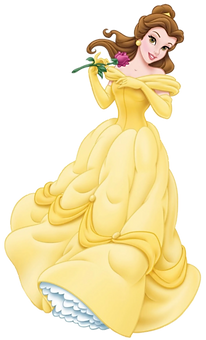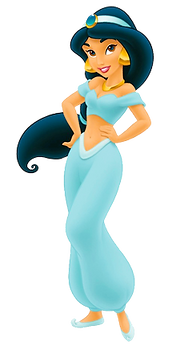Generation 2: 1989- 1992
The princesses of Generation Two are doers who crave adventure. They ultimately have more complex personalities than the previous generation but fall short of offering an image of empowered self identity and martyr themselves unreasonably for men.



Ariel
Ariel is a collector of lost treasures and her personality is more pronounced than any other princess in the previous generation. Ariel is very problematic because she needs to give up her voice in order to be with a man. To win the love of a prince, she must forfeit her thoughts and intellect, independence and identity. In the movie, there are damaging implications regarding class since there is a difference between the underwater world and the human world. The underwater world is seen as a marginalized culture, where the human world is the dominant culture. King Triton sees the humans as barbarian and dangerous and strictly forbids the integration of these two societies. Disney employees claim Ariel is made to look more modern and like a “slightly anorexic barbie doll.” They later reflect that she is “a dangerous model for young women.” Another criticism of the movie comes from race experts who claim that The Little Mermaid is racist because Sebastian, the crab, has a caribbean accent, equating Black people to animals.
Belle
Belle loves to read, which is a big part of the movie. She exchanges her own freedom for her father's and suffers from the mental illness, Stockholm Syndrome, where she falls in love with her captor. Belle is captured by her “prince" and then falls in love with him, a damaging message to young girls to forgive men who do horrible things to them. Belle is socially downgraded. She is the daughter of a working class villager. She climbs the social ladder by marrying the prince and her story is seen as a “a class struggle between the peasantry (working class) and the aristocracy (corporate America) of postmodern society.” Gaston and the villagers want to destroy the castle and the Beast. He argues that they should steal the riches and redistribute the wealth so that everyone has the same amount. His perception is that the Beast is “a servant who is not serving.”
Jasmine
Jasmine is perhaps the most empowered of the princesses of Generation Two. She is the first princess to wear pants and presents a new idea of wanting to find love on her own and turns down numerous suitors. Jasmine's dad lets her marry the “street rat” Aladdin and allows her to decline Jafar, who is royalty. She is the only princess who recognizes that wealth leads to an increase of power. The street vendors are portrayed as unreliable and taking advantage, haggling for more money. The “street rats” are displayed as having big lips and noses, black beards, a fat and short body, and dark skin, which symbolizes that their culture and way of life is frowned upon and barbaric.
Connection to US History
Many important events that occur in this generation include the Equal Pay Act, affirmative action for women, Roe V. Wade, and the Pregnancy Discrimination Act. In 1981, Sandra Day O’Connor becomes the first woman to sit on the Supreme Court and 1992 is named "The Year of the Woman" due to the aftermath of the 1991 hearings in which lawyer Anita Hill accused Supreme Court nominee, Clarence Thomas, of sexual harassment which causes record numbers of women to be elected to Congress, with four women winning Senate elections and two dozen women elected to first terms in the House. As women are beginning to fight for their rights and are successful in some cases, Disney may be trying to portray more princesses with personality who still want to be rescued by a prince to bring society back to where it was.
